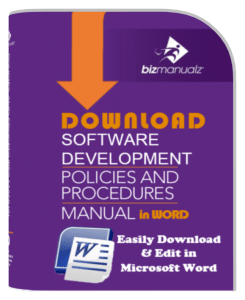What’s the Most Popular Project Management Methodology Today?

Project management is a field that is constantly changing and has become increasingly present in virtually every industry. The work that needs to be done can take on many different approaches, and understanding the different types of project management methodologies is key to consistently achieving the desired results. What’s the most popular project management methodology today?
Top 5 Most Popular Project Management Methodologies
While it is important to understand what the costs of each method or policy are, knowing what each strategy incorporates can greatly facilitate the decision-making ability of which Project Management (PM) Methodologies to use. On top of the fact that management processes and policies can save you time and money, they also can be specifically tailored to fit your team’s needs and desired mode of operation. Below are the top 5 most commonly known techniques that have been used by project managers.
1. Agile Project Management
Agile is often known as one of the first PM methodologies to be popularized and it is ideally suited for iterative and incremental projects. It’s a sort of process in which self-organizing and cross-functional teams and their customers work together to develop needs and solutions.
The agile method is a classic set of organizational principles. It does not utilize a specific set of tasks, but rather it follows a set of guidelines that accompany other more direct methods.
The Four Guiding Principles of Agile
-
- Collaboration-based
- Time and efficiency-focused
- Iterative and data-centered
- Values people over process
Agile is an approach that includes other methodologies such as Scrum and Kanban, which are used to build and provide a product or service. Scrum and Kanban have their own set of traits and vocabulary, which is why they are nex t.
t.
2. Scrum Project Management
Otherwise called the sprint method, this strategy utilizes short “sprints” that are taken on the framework of each portion of the project’s development. Each portion or cycle of the project typically lasts about one to two weeks, and is carried out with a “scrum leader” hosting daily, weekly, and monthly meetings (huddles) to discuss current updates, retrospective observations, and future projections for the given project.
Commitment, bravery, concentration, openness, and respect are the five values that make up Scrum. Its objective is to use collaboration, accountability, and iterative progress to create, deliver, and maintain complex products. Scrum is best suited for tasks that require greater flexibility and works well with a Kanban system or performance scorecard.
3. Kanban Project Management
Kanban increases efficiency through the use of visual signals or Kanban cards that indicate different phases of the development process. A Kanban board, Kanban cards, and even Kanban swim lanes are used in the process.
of the development process. A Kanban board, Kanban cards, and even Kanban swim lanes are used in the process.
Kanban is sometimes nicknamed the post-it method. The Kanban system incorporates these visual elements, whether virtual or literal, to illustrate the various components of each stage along the development process. From ideation to completion, the Kanban system takes advantage of more drawn-out pathways to more easily pinpoint each element of the process.
4. Waterfall Project Management
Also known as the software development life cycle (SDLC), this form of planning utilizes a linear workflow of a predetermined sequence of compartmentalized tasks or objectives similar to a stage gate process. The way this approach works is that each group of tasks unlocks the next set, and so on until each deliverable is complete.
The Waterfall approach of project management emphasizes the need for good documentation. The concept is that if a person leaves during the development cycle, their successor may pick up where they left off by orienting themselves with the data, records, and other documentation.
Waterfall Process Six Main Categories
-
- Requirements
- Analysis
- Design
- Coding
- Testing
- Operations
5. Critical Chain Project Management (CCPM)
Often associated with the critical path method, the critical chain project method is known to be much more comprehensive in scope, due to its more detailed structure. Along with incorporating a breakdown of each task, it also assigns a timeline and/or deadline for each set of tasks.
critical chain project management is derived from the Theory of Constraints, created by the physicist Dr Eli Goldratt. This approach looks at constraining the activities of each project, but also provides greater clarity in terms of what stage in the process a project currently stands and understanding where the bottlenecks are forming so more resources can be given. It is especially useful to help teams dealing with challenges in efficiency and accountability.
Popular Project Management Methodologies 
Whether you have a small team of ten or a team of over 100, project management is absolutely essential to the sustained success of any company. Luckily, with modern work management software, you have the option of customizing your own project management system.
Knowing things like what is the focus of your project, your team size, the level of detail required in each role, and how everyone works together, are all crucial to choosing the right method for your team and project.















Leave a Reply